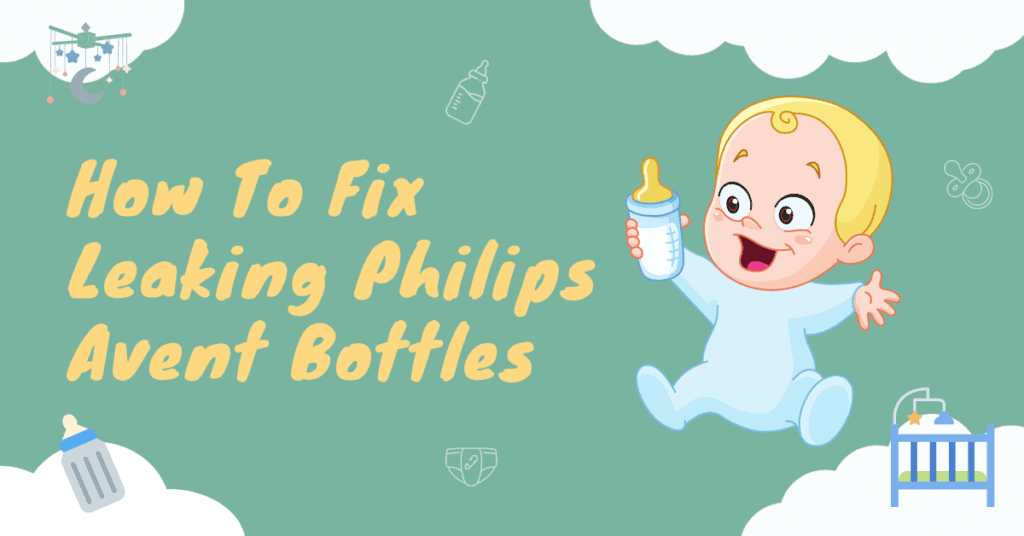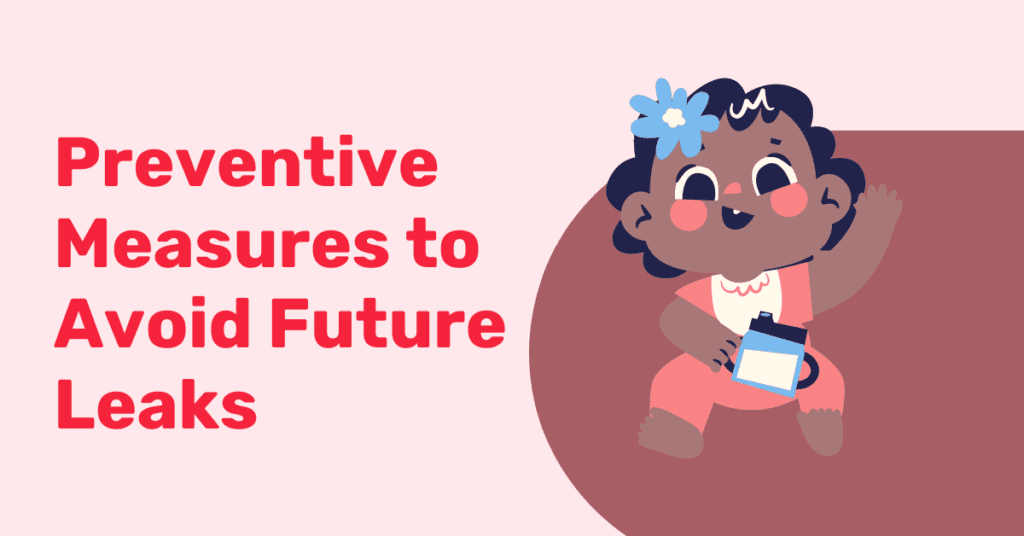If you’ve landed on this page, chances are you’ve had the pleasure of cradling a leaking Philips Avent bottle that’s dripping milk or formula onto your darling little one. You’ve likely shot a few disgruntled glances at the Philips Avent bottle and maybe even muttered a few choice words under your breath. Well, you’re in good company!
First, Philips Avent bottles are great bottles – with their innovative design, they’re crafted to mimic breastfeeding, making the transition between breast and bottle smoother for both baby and parent. But let’s face it, sometimes it seems like they’re more adept at mimicking a leaky faucet than a mother’s breast, right?
So grab a cup of tea or coffee and let’s figure this out together.
Understanding the Leaks
The leaking issue with Philips Avent bottles typically manifests as milk or formula seeping out from the sides of the nipple or the bottom of the bottle. This can occur during feeding, when shaking the bottle to mix formula, or even when the bottle is simply resting on a surface. The amount of leakage can vary, ranging from minor drips to significant spills.
Potential reasons why Philips Avent bottles might leak
- Incorrect assembly: One of the most common reasons for leakage is incorrect assembly of the bottle components. If the parts are not fitted together properly, it can create gaps through which the liquid can escape.
- Damaged parts: Over time and with regular use, the bottle parts, especially the nipple and the ring, can wear out or get damaged. Even minor damage can lead to leakage.
- Overfilling: If the bottle is filled beyond its capacity, it can cause the liquid to spill out, especially when the bottle is tilted for feeding or when the formula is being mixed.
- Rapid temperature changes: When the bottle experiences rapid temperature changes, such as when a cold bottle is suddenly exposed to warm temperatures, it can cause the bottle materials to expand or contract, leading to leakage.

How to Fix Leaking Philips Avent Bottles
A step-by-step guide to correct assembly
- Proper placement of the ring: Ensure that the sealing ring is correctly placed on the bottle’s neck. It should be flat and not twisted or warped.
- Ensuring the nipple is correctly fitted: The nipple should be pulled through the ring until it fits snugly. Make sure it’s not too loose or too tight, as both can lead to leakage.
- Correctly screwing the bottle parts together: When attaching the bottle parts, make sure they are screwed together firmly but not overly tight. Over-tightening can cause the parts to warp or damage, leading to leaks.
Identifying and replacing damaged parts
- Checking for cracks or damage: Regularly inspect your Philips Avent bottles for any signs of wear and tear, such as cracks, chips, or thinning of the material. Pay special attention to the nipple and the ring, as these are the parts most prone to damage.
- Where and how to purchase replacement parts: If you find any damaged parts, replace them immediately to prevent leaks. Replacement parts can be purchased from authorized Philips Avent retailers or directly from the Philips Avent website.
Proper filling techniques to avoid overfilling
When filling the bottle, make sure not to exceed the maximum capacity indicated on the bottle. Leave some space at the top to allow for expansion of the liquid, especially when preparing warm formula or expressed breast milk.
Managing temperature changes to prevent leakage
- Proper warming techniques: When warming the bottle, do so gradually to avoid sudden temperature changes. A bottle warmer can help ensure a gentle and even warming process.
- Cooling methods: If you need to cool down a hot bottle quickly, do so gradually as well. Placing the bottle in a container with warm water and gradually adding cooler water can help manage the temperature change and prevent leaks.
The Impact of Leaking Baby Bottles
Wastage of baby formula or breast milk
Leaking baby bottles can lead to significant wastage of baby formula or breast milk. Given the effort that goes into pumping and storing breast milk, or the cost associated with baby formula, this wastage is not just inconvenient but also costly.
Potential health risks for the baby
While not directly harmful, a leaking bottle could potentially pose health risks for the baby. For instance, if the milk or formula leaks onto the baby’s neck or chest area, it could lead to skin irritation or rashes. Moreover, if the leakage is not noticed promptly, it could create a damp environment that is conducive to the growth of bacteria or fungi.
Extra cleaning and inconvenience for parents
Leaking bottles can create a mess, leading to extra cleaning work for parents. This can be particularly inconvenient during night feedings or when parents are out and about with their babies. Furthermore, if the leakage goes unnoticed, it could potentially stain or damage other items in the diaper bag or the baby’s clothing.

Preventive Measures to Avoid Future Leaks
Regular maintenance and inspection of the bottle parts
Regularly inspect your Philips Avent bottles for any signs of wear and tear. This includes checking the nipple for thinning or tears, ensuring the ring is not warped, and looking for any cracks or chips in the bottle itself. Regular inspection can help you identify potential problems before they lead to leaks.
Proper cleaning and storage methods
Proper cleaning and storage of your Philips Avent bottles can also help prevent leaks. Always disassemble the bottle parts before cleaning to ensure all areas are thoroughly cleaned. Use a bottle brush to clean the inside of the bottle and the nipple. After cleaning, allow the parts to air dry completely before reassembling and storing to prevent moisture buildup, which can lead to damage over time.
Tips for safe transportation of bottles
When transporting your Philips Avent bottles, ensure they are securely closed and stored upright in a dedicated compartment of your diaper bag. Avoid placing heavy items on top of the bottles to prevent any pressure that could lead to leaks. If possible, transport the bottles empty and fill them when needed to minimize the risk of leaks.
Final Thoughts On Leaking Philips Avent Bottles
So, we’ve journeyed through the world of Philips Avent bottles, from the common issue of leaks to the nitty-gritty of how to fix them. We’ve looked at the potential culprits, from incorrect assembly and damaged parts to overfilling and sudden temperature changes. And we’ve shared some handy tips on how to prevent these pesky leaks.
Let’s not forget, a well-functioning baby bottle is more than just a feeding tool. It’s the key to a happy, well-fed baby and a less stressed parent. And let’s be honest, who wouldn’t want that? So, go ahead, apply these tips and tricks, and transform your Philips Avent bottles from leaky nuisances into reliable allies in your parenting journey. After all, every drop of milk counts, right?
And please, if you have a suggestion that worked for you and could help another parent out. Leave a comment and help us all out. I’d be happy to add it to our list here.

